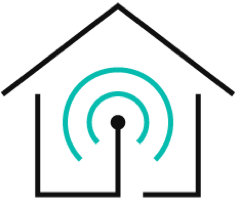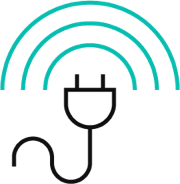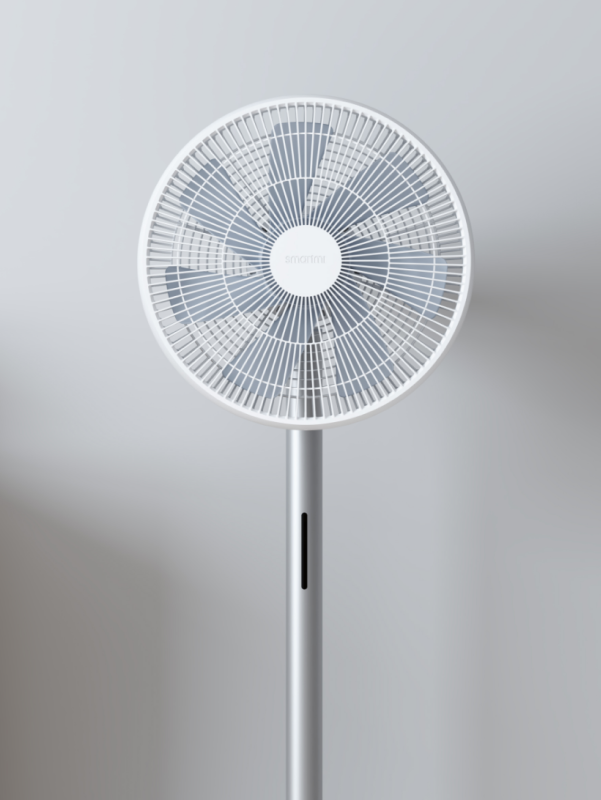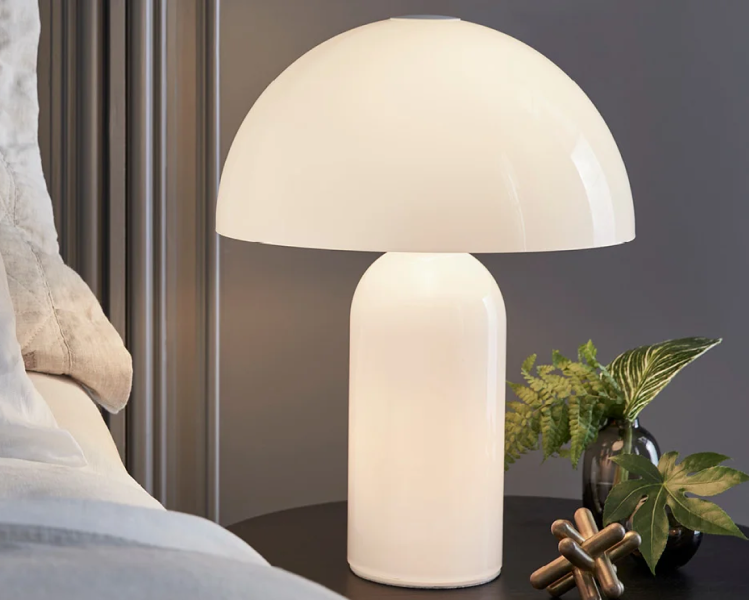Many folks constructing new homes are installing smart devices throughout their homes. Everything in our life is becoming more modern, from utilizing smartphones to manage air conditioners to using voice control to adjust light brightness. Fans weren't given much consideration in the past, and every home had the same old designs.
Smart fans, on the other hand, have just begun to acquire popularity. Choosing the best smart fans today can be challenging because there are so many manufacturers. This guide will aid you in choosing the best smart fans at the lowest prices.
EVVR provides its clients with a complete range of smart home products and services, from smart hubs to power and plug options, for convenience, support, and peace of mind. Feeling intrigued? Check out our products and place your order now!!
- What Is A Smart Fan?
- A Smart Fan Vs. A Conventional Fan
- Energy Consumption For A Fan
- Why Should You Get A Smart Fan?
- Types of Smart Fans
- Top Smart Fans For You In The Summer of 2023
- EVVR - Your Smart Home Companion For Everything
What Is A Smart Fan?
By detecting the current temperature and selecting the appropriate setting, smart ceiling fans can regulate the ambient temperature in your home. They are also capable of following a predetermined timetable.
Most smart ceiling fans include voice control capabilities integrated with smart home hubs like Amazon Alexa, Google Assistant/Google Home, and Apple Homekit. To operate the majority of these gadgets remotely when you are away from home, you require WiFi.
Additional characteristics to watch out for:
- Highly energy-efficient, keep an eye out for reversible motors, built-in temperature, and humidity sensors, and the ability to pull and "updraft" air up for wintertime temperature adjustment.
- LED lights that are built-in and have a wide range of brightness settings.
- Depending on your needs, it has indoor and outdoor variants.

A Smart Fan Vs. A Conventional Fan
As you have read through all the capabilities a smart fan offers, it is also worth pointing out that a smart fan can be an energy-efficient solution. Some fans also come integrated with LED lights illuminating the space with different colors. All said and done, a smart fan can help you save money on power.
Smart fans tend to be costlier, almost double what you would pay for the dumb fans in the market. But many suggest that a smart fan's ability to be energy efficient can help you save money in the long run, which works out in a similar ballpark to the regular fan.
Another way to save money safely is to integrate EVVR Energy Monitoring Smart Plug with all your major appliances. It lets you control the power delivery remotely and provides consumption insights through the EVVR app.
Energy Consumption For A Fan
The units of power are watts and kilowatts. In essence, it shows how quickly a device uses power. A 100-watt ceiling fan, for instance, consumes 100 watts of power every hour. One kilowatt is equivalent to 1000 watts.
Kilowatt-hours are the unit of measurement for a ceiling fan's hourly power usage. For instance, 2400 watt hours, sometimes called 2.4-kilowatt hours or 2.4 units of electricity, are used by a 100-watt TV that runs nonstop for 24 hours.
Compared to this, a smart fan has built-in features that allow it to "understand" the situation and turn it on and off. This is one of the traits that make a smart fan the best choice for homes, especially ones with kids and elders.
Why Should You Get A Smart Fan?
Smart fans have gained popularity because of their practicality and aesthetics. Compared to air conditioners, they use less electricity, and DC motor versions are even more effective. Although they cannot replace air conditioners, fans aid in maintaining a consistent temperature throughout the space. The use of air conditioners will undoubtedly reduce as a result of this. They will enhance the beauty of many household settings and have very current designs.
Fans are now relatively simple to manage, like the EVVR Energy Monitoring smart Plug, which takes only a couple of minutes to connect because of technologies like voice control that manufacturers have built into them. Most fans come with a remote control that lets you switch between various speeds, modes, and occasionally even the blades' direction.
You may download applications from many of these companies to your smartphone. When your smart fan is connected to WiFi, you can control any setting from your phone or other smart home appliances like Alexa and Google Assistant. They are efficient because of this, which is why so many people adore them.
Types of Smart Fans
You can select the smart fan from various models that best suits your needs.
Pedestal Fans
Stand fans, known as pedestal fans, can be used inside and outside. You can even relocate them around the house because they are portable. Some intelligent fans can be recharged, while others need to be kept plugged in. Because they don't produce as much noise as conventional pedestal fans, you can also keep intelligent pedestal fans in your bedroom.
Ceiling Fans
The newest trend is intelligent ceiling fans. Unlike the conventional ones that have been around for a long time, ceiling fans now come in various unique styles and functionalities. Some smart ceiling fans include a motion detector that turns the fan on when someone enters the room and standard capabilities like speed and mode control.
Tabletop & Floor Fans
These smart fans are intended for indoor. They can improve the ambiance when placed in kitchens or bedrooms. These fans can make your rooms comfortable thanks to their smart functions without constantly forcing you to run the air conditioner.
Keep in mind that you can always remotely control a dumb fan by connecting it with one of our plug-and-play devices, such as EVVR Energy Monitoring Smart Plug & Relay. This allows a customized environment with integrated lighting and a seamless experience!
Top Smart Fans For You In The Summer of 2023
Here are some of the best smart fans in the market that you can buy right now!
smartmi Smart Fan
This clever pedestal fan is perfect for use both inside and outside. Its seven blades produce a powerful airflow, and the DC inverter uses less electricity. It includes a rechargeable battery that, when completely charged, can operate for up to 20 hours. This fan's sound level is only 28.6 decibels, so you may place it in your bedroom and have a restful night's sleep.
You may select from 100 speeds using the MI Home app, which is compatible. The fan has four distinct rotational angles, a timer, and several modes to pick from. There are only 9 pieces in this fan, making assembly quick and simple.

WAC Lighting Smart Fan
This ceiling fan may be used both inside and outside. DC motors, which are practical and silent simultaneously, are used in the Mocha Smart Fan. A wall cradle and smart remote control are supplied for controlling the fan. The remote, which may operate various features, connect to the fan through Bluetooth.
By installing their app, you can even use your smartphone to adjust the various settings on your fan. The fan may also be voice-controlled by Alexa or other smart home appliances by pairing with them. Up to 32-degree, slanted ceilings can have it fitted. The download is 6", but longer ones are available separately.

SMAAIR Smart Fan
This smart fan has a simple appearance and is very attractive and practical. Both indoor and outdoor use are appropriate for it. It has a remote control and can be controlled by speech via Google Assistant, Alexa, and Siri. The fan also contains a light along with the timing and speed adjustments.
Following the weather, you can even reverse the orientation of the fan blades. A DC motor is 75% more energy-efficient than an AC motor. Because it is quieter than conventional fans, you can install this smart fan in your bedroom. You can take advantage of the company's limited warranty when you buy it.

SmaInHand Smart Fan
Due to its modest weight, this clever pedestal fan may be used inside and outside. It rotates and has five blades for adequate airflow. It won't disturb your sleep and doesn't generate a lot of noise. Downloading the app to your smart devices will allow you to manage the speed, timer, and mode.
Both Alexa and Google Home are compatible with it. The only ways to operate it are via a smart smartphone or the buttons on the front of the stand; remote control is not provided. Only 2.4G WiFi and 108-127 Volts are supported. Any additional requirements won't work with this fan.
NASH Smart Fan
The Nash Smart Pedestal Fan is a convenient and user-friendly device. It is straightforward to install because it is packaged in easily assembleable parts. All you have to do to control it is download an app on your smartphone or other smart device, such as Alexa. Siri and Google Assistant are additional controls available. You can change the mode, speed, and height. A timer can also be set. It does not have a remote control, and an AC motor powers the fan. When compared to traditional fans, it is silent.

EVVR - Your Smart Home Companion For Everything
Since its inception, EVVR has spearheaded the intelligent home movement for consumers. In a short span, we have developed and perfected an exceptional range of products and services to make your life brighter. The highlights of our offerings include EVVR Center, EVVR Center Lite, EVVR Energy Monitoring Smart Plug, and more. Our products are compatible with various products and communication protocols. So, what are you waiting for?
















